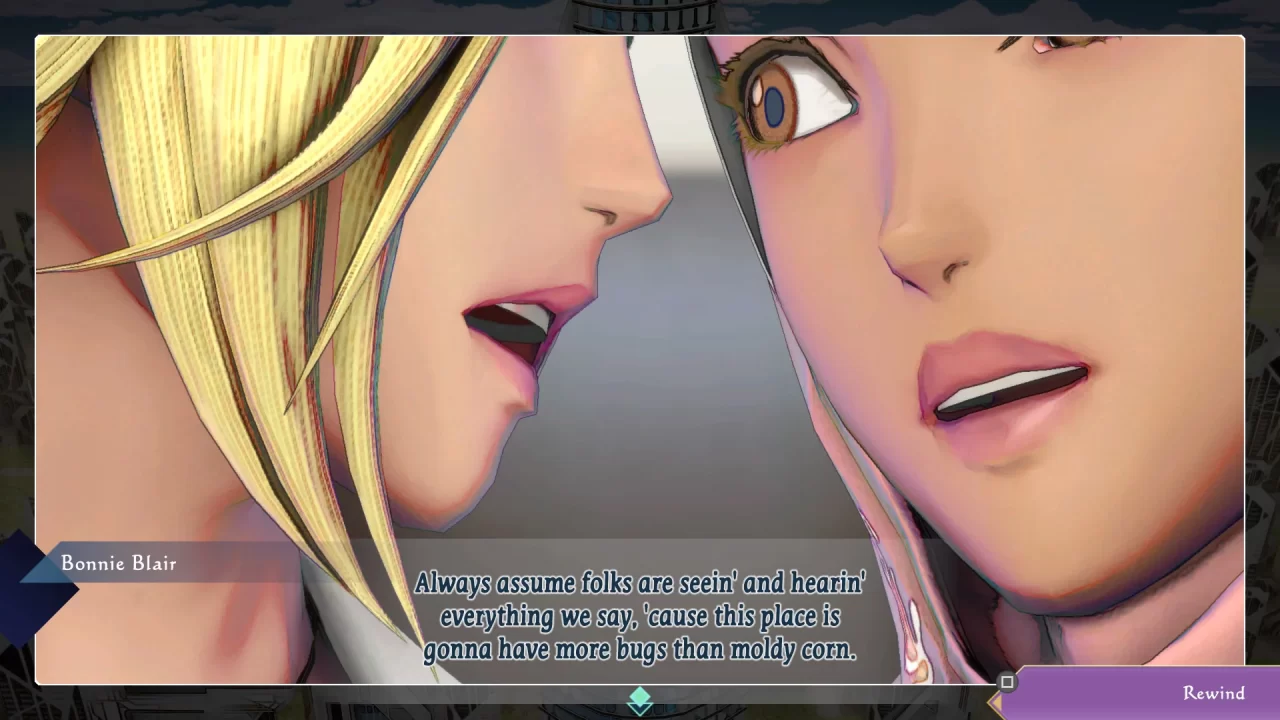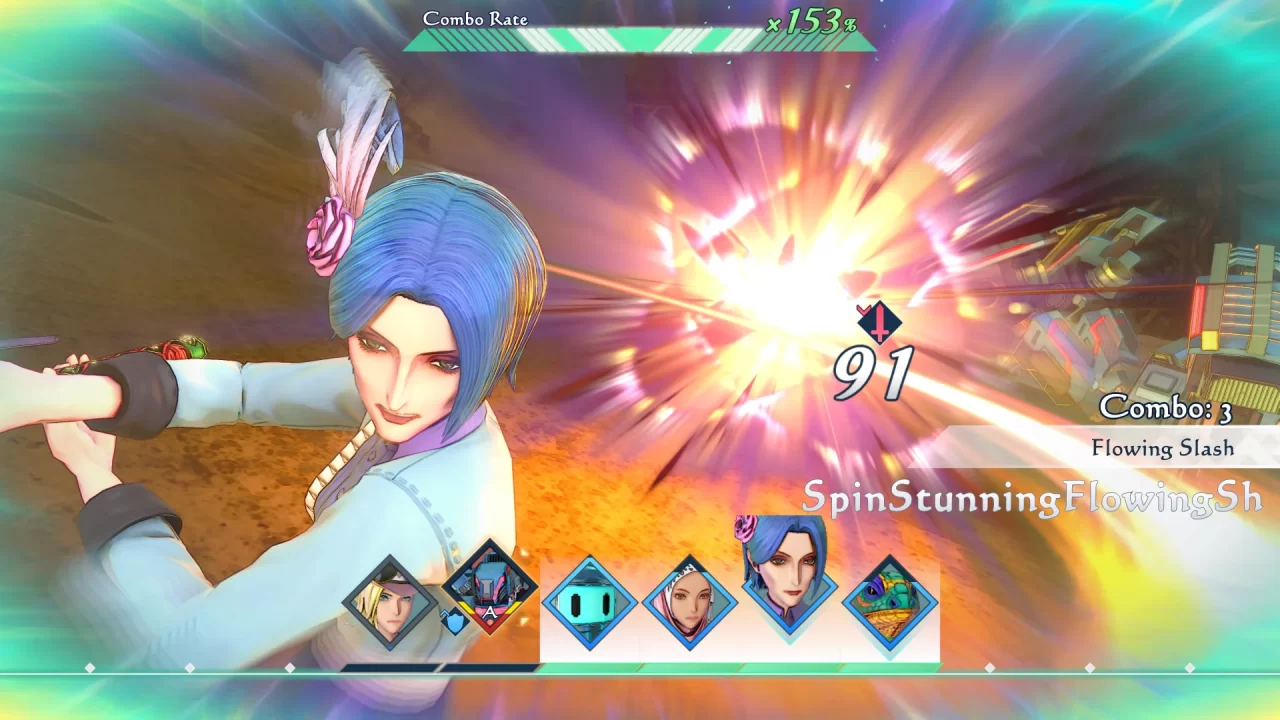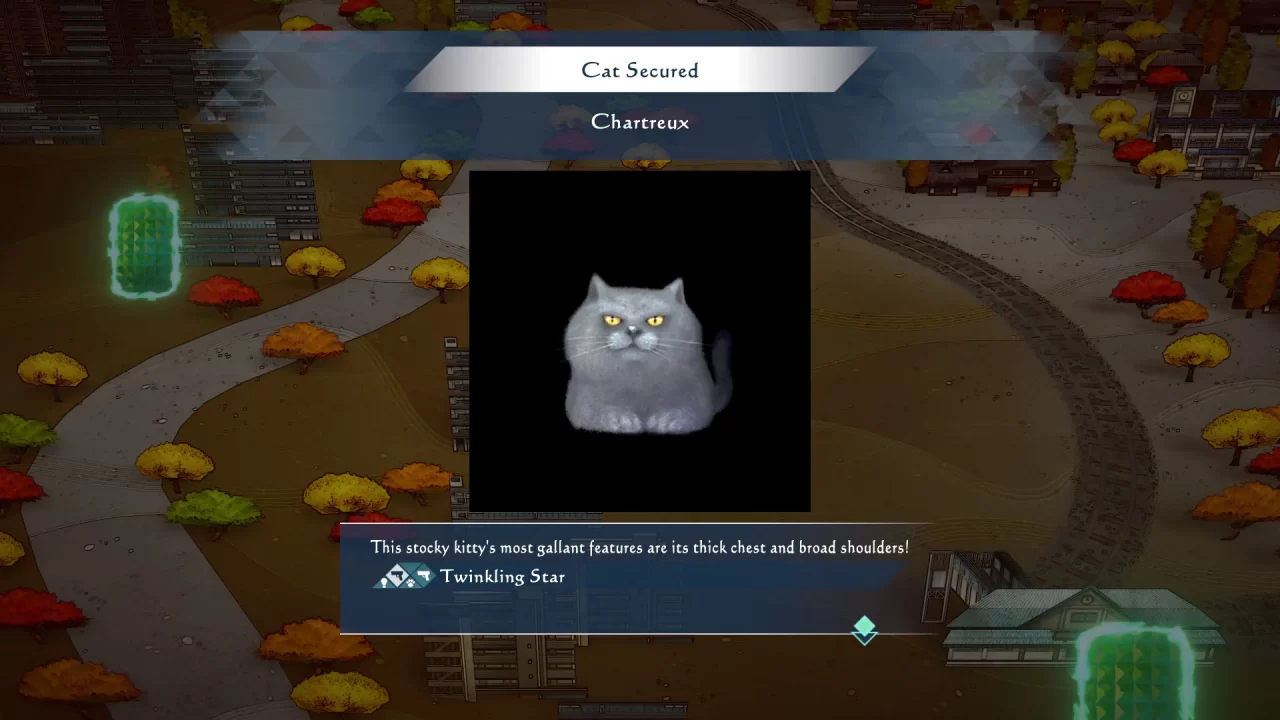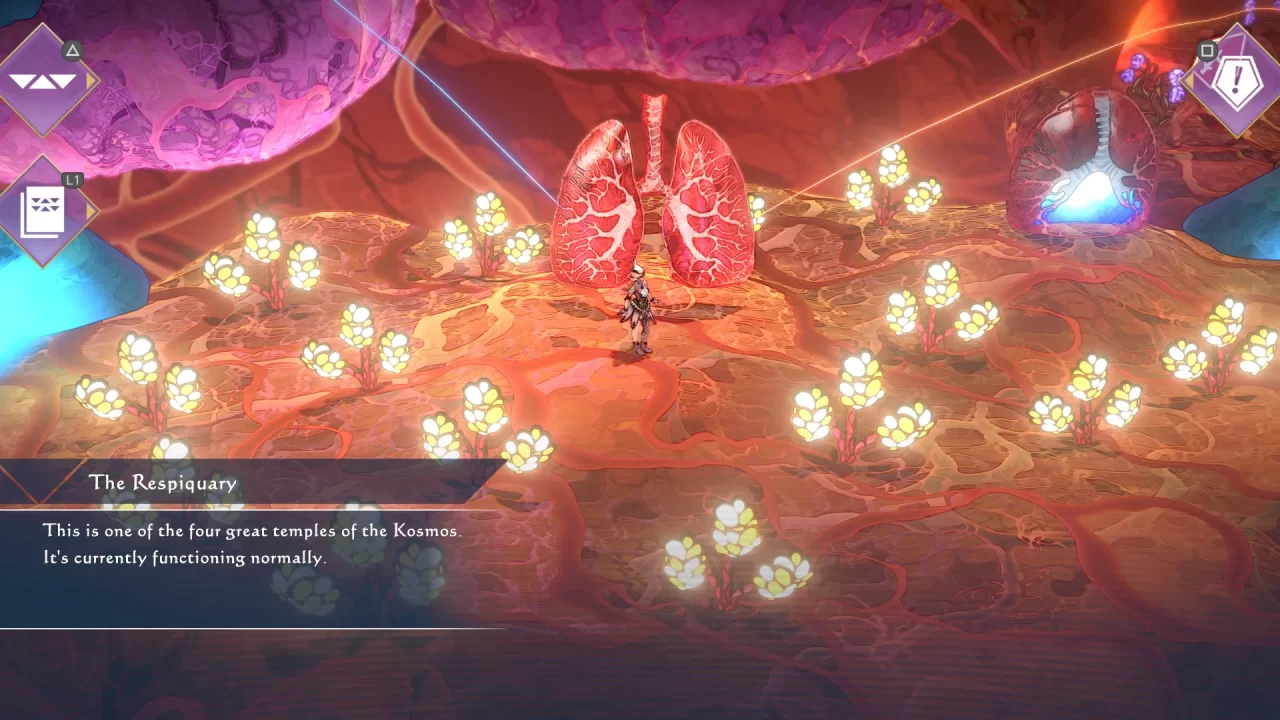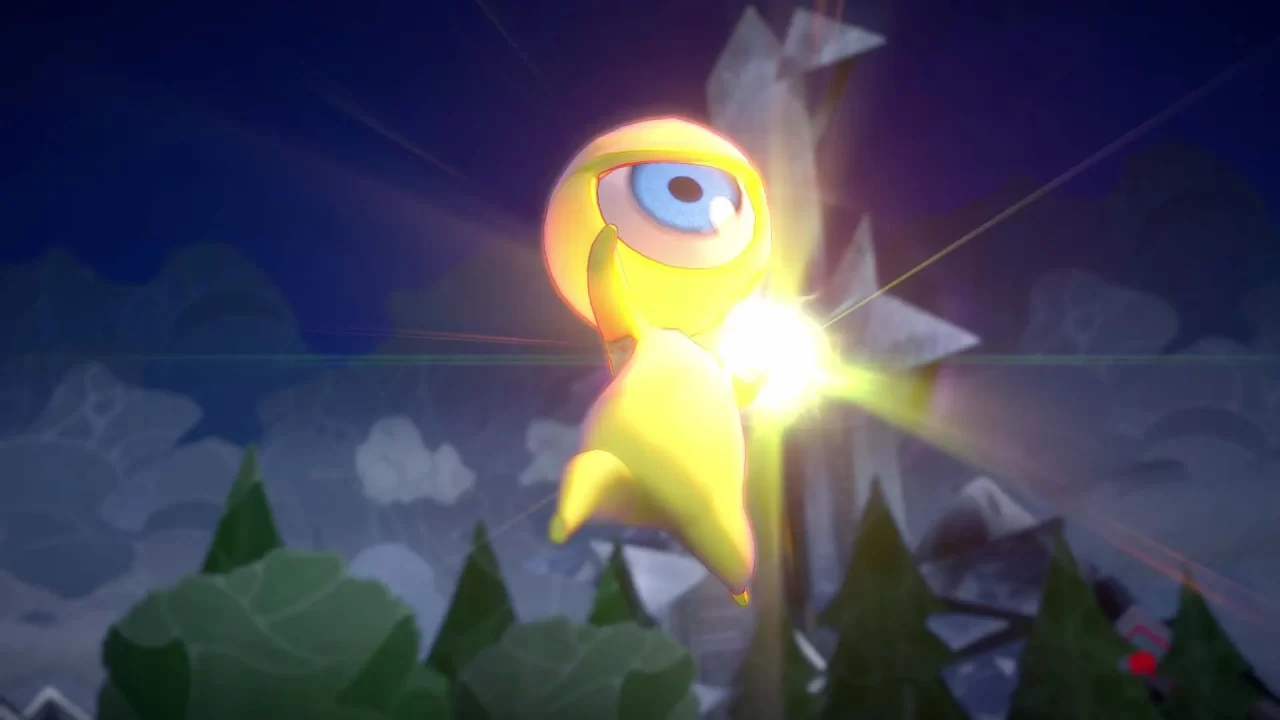SaGa is one of the longest-running RPG series out there. Many fans claim the 36-year-old Final Fantasy II is the first game in the series, one of its lead designers being SaGa series creator Akitoshi Kawazu. The first SaGa game (known as The Final Fantasy Legend in North America) came out for the Game Boy only one year later. In recent years, a deluge of re-releases has brought the series to new fans and positions its most recent entry, SaGa Emerald Beyond, as the first brand-new entry for many players. I dove into the series at the start of 2024 when I played through eight SaGa games within two months. Heading into SaGa: Emerald Beyond, I knew the following — I was now a major fan of the series, the prior game in the series was one of my least favourite, and SaGa Emerald Beyond looked to be a return to form while keeping much of what I still loved about SaGa Scarlet Grace. Yet, SaGa Emerald Beyond surprises me — both positively and negatively.
SaGa Emerald Beyond offers you a choice between six protagonists (two of whom are a duo), and they are a varied bunch: a former songstress mech, a buddy cop duo (one who wears a hijab, win for inclusivity!), a vampire king, a puppet master, and a witch who can change her age at will. They each offer a different framing storyline and focus on a unique way to play the game. Siugnas leads a party of vampire Thralls and Knights who can learn Sanguine Arts, while Ameya focuses on casting spells like no other protagonist does (she also gets to collect cats). At first, no matter who you choose, things proceed linearly until you can access the Junction between worlds and perceive Emerald Waves. From the Junction, multiple worlds are open for you to explore and attempt to accomplish your current protagonists’ goals (such as the cat-collecting mentioned above).
Each of the worlds is heavily themed and unique, from an endless desert filled with run-down machines to a space station studying the mysteries of the universe. For fans, a plethora of references to previous SaGa games await. Exploration takes place from a top-down perspective, and interactive locations look like paper cutouts. The emerald waves show you all the available events and battles in the current world. Events are quick, static conversations between avatars over a background. Unlike most previous entries in the series, there are no dungeons to explore, minimal voiceover, and the excellent soundtrack feels sparsely utilized. It all feels quite minimalist, that is until you enter battle.
The game shares its basic framework for battles with SaGa Scarlet Grace. In every round of combat, you have a pool of stars known as Battle Points (BP) to spend on actions. The party shares a BP pool, and each character can only take one action in a round. Each Tech or spell also costs different amounts of BP. Any character who doesn’t spend BP automatically defends instead. So, if you start a round with five BP and have a party of five different characters, you could split your round by doing a one-BP Tech or spell per character. Alternatively, you could spend all five BP on a single character’s Tech or anything in between. Techs and spells that cost more BP may be more powerful, but there are all kinds of reasons you may or may not want to use different abilities. The core of SaGa Emerald Beyond’s combat isn’t just choosing the attacks that do the most damage; it’s manipulating the timeline.
The timeline shows the order of actions for the round, both friendly and enemy. Techs and spells can move you backward and forward on the timeline, allowing you to manipulate when actions happen. At the most basic level, this helps you act before your opponents, but SaGa Emerald Beyond takes it far beyond (heh) that. Every Tech and spell shade in boxes located beneath the timeline. If two or more characters’ boxes overlap, they will perform a Combo during the round. Combos give a damage multiplier, and when the multiplier reaches over 150%, there is even a chance to activate an Overdrive for additional attacks. Combos are powerful and can easily change the fate of your party. A good combo could mean the difference between wiping out an enemy before they can attack and hardly damaging them. Because of the importance of combo actions, sometimes it is better to use a weaker Tech to ensure the character joins a combo, even if you have the BP to spare. Enemies can perform combos too. So, it is in your best interest to take actions that will disrupt enemy combos. If that were all there was to combat, it would already be immediately compelling, but let’s throw a wrench in the gears and discuss Conditional Techs.
Conditional Techs only activate under specific conditions. These range from interrupting an attack type to chaining an action with another or countering attacks. Techs or spells with the quell trait can disrupt conditionals (yours and your enemy’s), adding another layer to the thought processes needed to win battles. Yet, somehow, there is even more!
A Showstopper occurs when a character finds themself isolated on the timeline. The result is a bunch of free attacks. This is easier to perform when fewer characters are in the battle, so it often results in real “grasping victory from the jaws of defeat” moments against bosses. Conversely, it can also mean the same boss wipes out your whole party in one round. Always keep the possibility of Showstoppers in mind.
In typical SaGa fashion, characters can potentially Glimmer a new Tech of the same type whenever they use one. Not only do they permanently learn that new Tech, but they get a single free use of it, dealing unexpected damage. Tech types can belong to a broad category (one-handed blades, two-handed blades, one-handed guns, two-handed guns, and martial arts) or narrow categories (two-handed blades include swords, katanas, and spears) or even be specific to a single weapon. Every SaGa fan knows one of the greatest feelings in gaming is the high you get when the Glimmer sound effect hits and a lightbulb appears over a character’s head.
You gain equipment and materials from battles or through trade. There is no money in SaGa Emerald Beyond. Instead, you have two options — either auction off your items and choose from a list of corresponding bids or trade from an ever-changing list of items. You can also use materials to upgrade your equipment from the menu, and there is an impressive array of options. One blade might be able to change into six different weapons depending on the materials you use.
Characters in SaGa Emerald Beyond are much more varied than in SaGa Scarlet Grace. Not everyone is human. Several other races exist to mix things up: mechs, vampires (and thralls and knights), monsters, kugutsu, and ephemerals. Each race has unique ways to grow and gain Techs. For example, a mech’s stats and Techs depend entirely on their equipment. Meanwhile, monsters gain stats like humans (randomly after a battle) but cannot change their weapons and armour and can absorb abilities from enemies. Characters also learn equippable Roles based on their stats, weapon levels, and other criteria, which offer even further customization. Every protagonist will have a band of weirdos join them by the end of their journey, but in comparison to many SaGa games, your party will be surprisingly small, so make the best of who you obtain!
Each party member who joins you offers a new Formation to try out. Formations can grant different starting and max BP, affect the BP cost of abilities, and determine how you gain more BP. So, one Formation might make spells cost less BP and increase your BP whenever you successfully combo with a spell, while another might make Techs cost less BP and increase your BP by one at the start of every round.
The bulk of this review speaks to combat, which is only fair, as the bulk of SaGa Emerald Beyond exists in combat. Battles are frequent, lengthy, and mentally taxing, but they are also fun, rewarding, and look stunning in motion. The animations for my favourite attacks never get old. Mr. S (of SaGa II) even returns, offering you combat trials you can complete to gain rewards. These are great for flexing your muscles and trying new things in combat. Truly, the combat system is the pinnacle of the series and one of the best in the genre.
SaGa is known for being obtuse, challenging, engaging, replayable, and open in a way most RPGs are not. SaGa Emerald Beyond lives up to all these expectations but not always in the way you may predict. SaGa Emerald Beyond has the most extensive tutorials in the series’ history. That doesn’t mean it isn’t demanding, but there is much more opportunity for the player to learn how to grapple with the difficulty in-game. So, for those worried about difficulty and too much friction, it may still be worth a try.
Further, this is an incredibly open, non-linear game, but it doesn’t present itself that way. Everything you do in SaGa Emerald Beyond counts as making a decision on some invisible level. Did you choose to talk to this person before that person? Did you go to this world before that world? Did you fight this battle instead of continuing with the main story? These things can all affect how the story plays out. However, the emerald waves you follow to events and battles rarely offer you more than a few options at a time, and in practice, the game ends up feeling linear, even if two players could have wildly different playthroughs. On further playthroughs of the game, when choosing a new character or even replaying one, the true breadth of the world starts to shine through. The same world might feel completely different because of your previous actions. It’s too bad you’re unlikely to notice the ambition on display on your first playthrough.
The game does do a lot to encourage repeat playthroughs. Not only do the storylines and the battles you face change, but you get to keep your equipment and some other progress across playthroughs, making breezy playthroughs even brisker. Your first playthrough might take more than a weekend, but repeats can take as little as an afternoon.
SaGa Emerald Beyond isn’t what I expected. The initial trailers made me think it would be SaGa Scarlet Grace with more of a budget and the return of many beloved series elements. I thought it might even end up being the most SaGa game to ever SaGa. Instead, it feels more like SaGa Scarlet Grace done differently. I am happy to see many of the wackier elements of SaGa make a return, but I still very much miss being able to traverse dungeons, go to shops, and talk to the townsfolk. Despite the ways SaGa Emerald Beyond doesn’t click for me, it is impossible to deny the sheer genius of its addicting combat system or the creativity of its developers. I don’t think SaGa Emerald Beyond will convince anyone who didn’t like the series to give it another go, but it is worth playing for fans and potential fans alike.
